You buy the reddest, juiciest-looking strawberries at the market, anticipating the sweet taste of delicious sun-ripened berries -- only to bite into a sour, not-ripe or over-ripe piece of fruit. When the promise of beautiful berries evaporates at first taste, the flavor may have been sabotaged by the weather. Know what makes a sweet or a sour strawberry, and then try growing your own for a harvest of strawberry sweetness.
Sour Strawberries
Strawberries are sun worshippers. When they grow in warm, sunny conditions, they produce more sugars and are extremely sweet. When the weather is cold, rainy and cloudy during May and June in temperate climates -- or earlier in the season for subtropical climates -- the fruit fails to develop sweetness and hits those sour-sensing taste buds on your tongue. Conversely, extreme heat can turn berries bitter. So stormy, gloomy or oven-like weather makes for tart, unsavory strawberries and it can cause berries to become inedible. Leather rot is a fungal disease that attacks berries in wet weather conditions. Berries affected by leather rot taste bitter and have an unpleasant leathery texture.
Chemical Attraction
Intelligent cultivation may produce berries that are reliably sweet enough so you can skip the sugar. Researchers at the University of Florida have isolated volatile chemicals that enhance the perception of sweetness. As you chew and swallow food, these volatile chemicals hit the back of the throat and the nasal cavity, the "retronasal" path, that results in olfactory perception -- the smell that integrates with taste buds in the tongue to form the experience of sweetness, or not, in your brain. By breeding strawberries with volatile chemicals that produce flavor intensity, specific strawberry flavor and sweetness, researchers produced fruit that tasted very sweet, even when the berries had low sugar content.
Flavor Factory
Strawberries will turn red on or off the vine, so what you find in your supermarket may be lushly vine-ripened or just red by default. Color is not a reliable indicator of flavor or sweetness. Odds are in favor of locally produced berries -- U-pick from fields, farmer's market berries and grocery store berries that include information about the local growers of their fruit. If you really want to control for sweetness, consider growing your own.
Sweeter Strawberries
Make your own cultivar selections, prepare the soil, and monitor sunlight and growing conditions for a satisfying strawberry harvest that could last all summer. Pick from short-day, everbearing or day-neutral cultivars. Short-day strawberries respond to the shorter sunlight hours in fall and spring to produce flowers and then berries -- fall plants fruit in early spring, as the annual harvest season for Florida strawberries demonstrates. In temperate climates, spring plants fruit from June into early July. Once the harvest is in, the plants send out runners and grow bushy foliage but won't fruit again for a year. Everbearing plants produce two annual harvests: late spring and late summer or early fall. Day-neutral plants ignore day length and will flower and fruit multiple times, from June into fall, with the first harvest in June being the smallest.
Pick the plants to suit your growing zone and daily sunlight.
Choose temperate zone plants to set out in spring for U.S. Department of Agriculture plant hardiness zones 6 and colder. In zones 7 and warmer, you can plant strawberry cultivars in the fall. The plants need a full eight hours of sun each day, so locate your strawberry patch where it will bask in sunny splendor, ripening into sweetness.
Prepare the soil.
Adjust the soil for acidity -- strawberries prefer a mildly acidic growing medium with a pH from 5.5 to 6.8. Amend the soil with 1 to 2 inches of sphagnum peat or an acidifying fertilizer, worked into the top 12 inches of soil before planting. Grow your berries in large containers if your soil is too alkaline to adjust. Compensate for clay soil density by heavily composting it and mounding the lightened clay to promote better drainage. Sandy soil will grow berries once it is enriched with a layer of compost or manure.
Space plants for uncrowded growth.
Set the plants in rows with adequate room for the inevitable runners -- about 18 inches apart in the garden. Cover the roots completely but leave the bud or crown exposed. Keep plants well-watered and add a layer of straw or leaf mulch, or a black plastic cover with slits for plants to poke through, to hold in soil moisture. The soil should be moist, not soggy. Once the plants fruit, be careful not to leave water on the young berries or they could rot.
Pinch and prune.
Prune runners for all new plants so the full growing energy is channeled into producing lush, large fruit. If the plants bud before they are fully grown, pinch the first buds off to encourage healthier, more robust plants and better harvests later in the season.
Pick fruit in the morning.
Gather your berry harvest before the noon sun heats the garden. Leave the fruit on the plant until it is at least three-quarters ripe red for optimum sweetness. Pop those sweet, ripe berries into the fridge until you are ready to eat them. Rinse strawberries with cool water right before eating so they remain firm and fresh.
Related Articles

Places to Pick Wild Blueberries in ...
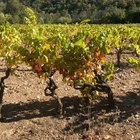
How to Grow Wine Grapes in Virginia

How to Grow Spider Mums
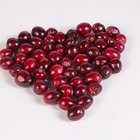
How to Freeze Sour Cherries

How Can I Preserve Peaches Without ...
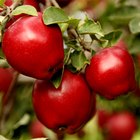
When Are Red Delicious Apples Ripe?

How to Ripen Red Chili Peppers
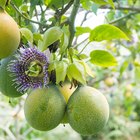
How to Eat a Maypop When Ripe
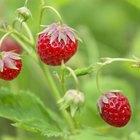
What Causes Strawberries to Mold?
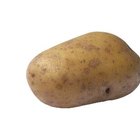
The Times to Plant and Harvest Yukon ...
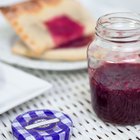
How to Make Grape Jam
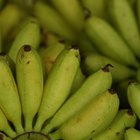
Is Eating a Banana With Brown Spots Bad ...

How to Cook Strawberries
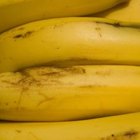
Stages of a Ripening Banana
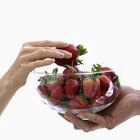
Information About Strawberries for Kids

How to Freeze Raspberries

When to Harvest Sweet Meat Squash?
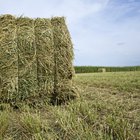
Alfalfa Hay Nutrition Information
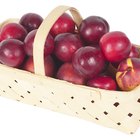
How to Freeze Whole Peaches & Plums

How to Freeze Peaches With Lemon Juice
References
- Iowa State University: Why Do My Strawberries Have a Slightly Bitter Taste?
- The Conversation: How to Make Strawberries Sweeter Without Adding Calories
- NPR: Bigger, Blander, Blegh: Why Are Strawberries Worse?
- Iowa State University: What Are the Differences Between the Different Types of Strawberries?
- Iowa State University: How To Change Your Soil's pH
Writer Bio
Benna Crawford has been a journalist and New York-based writer since 1997. Her work has appeared in USA Today, the San Francisco Chronicle, The New York Times, and in professional journals and trade publications. Crawford has a degree in theater, is a certified Prana Yoga instructor, and writes about fitness, performing and decorative arts, culture, sports, business and education .